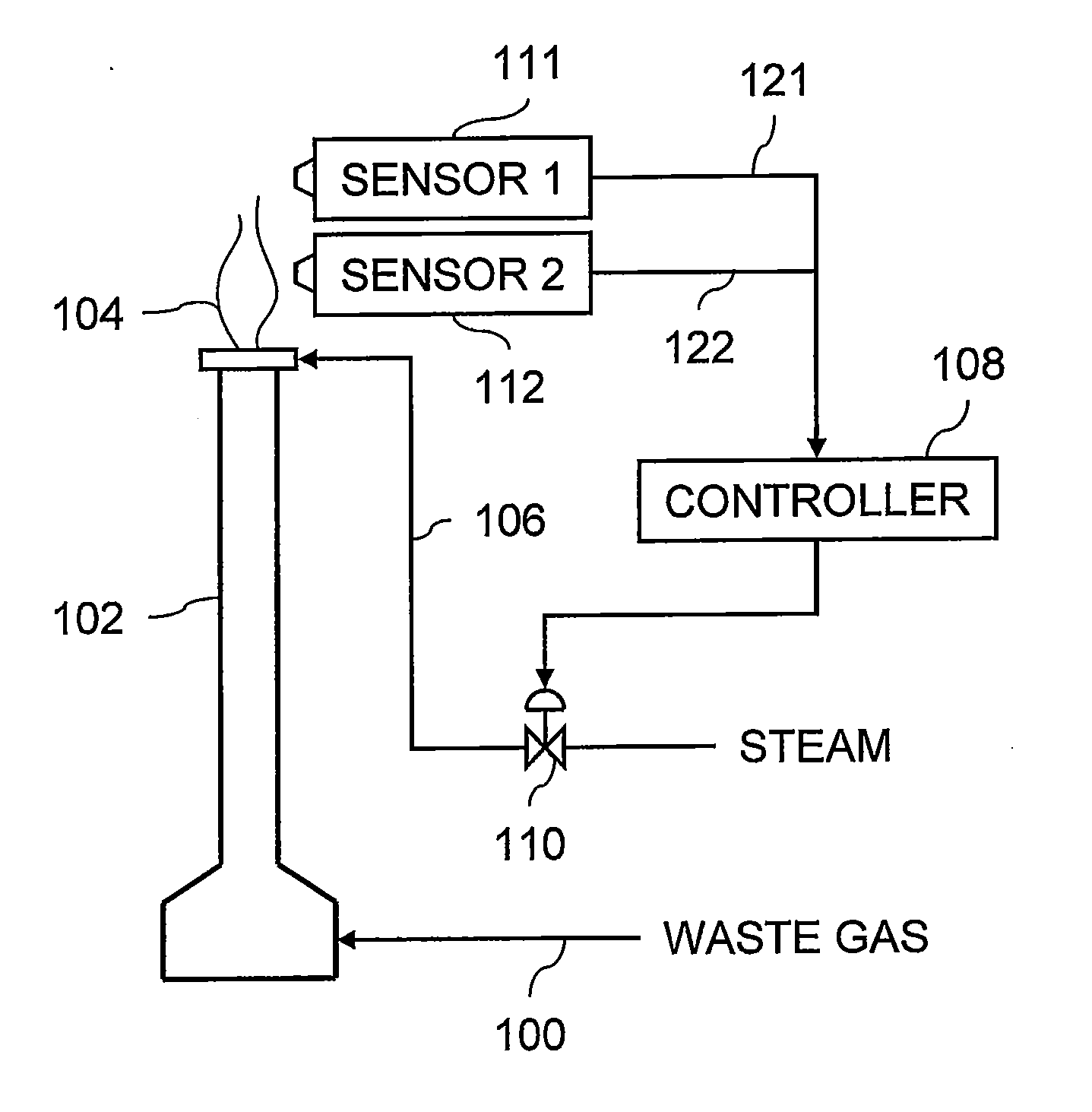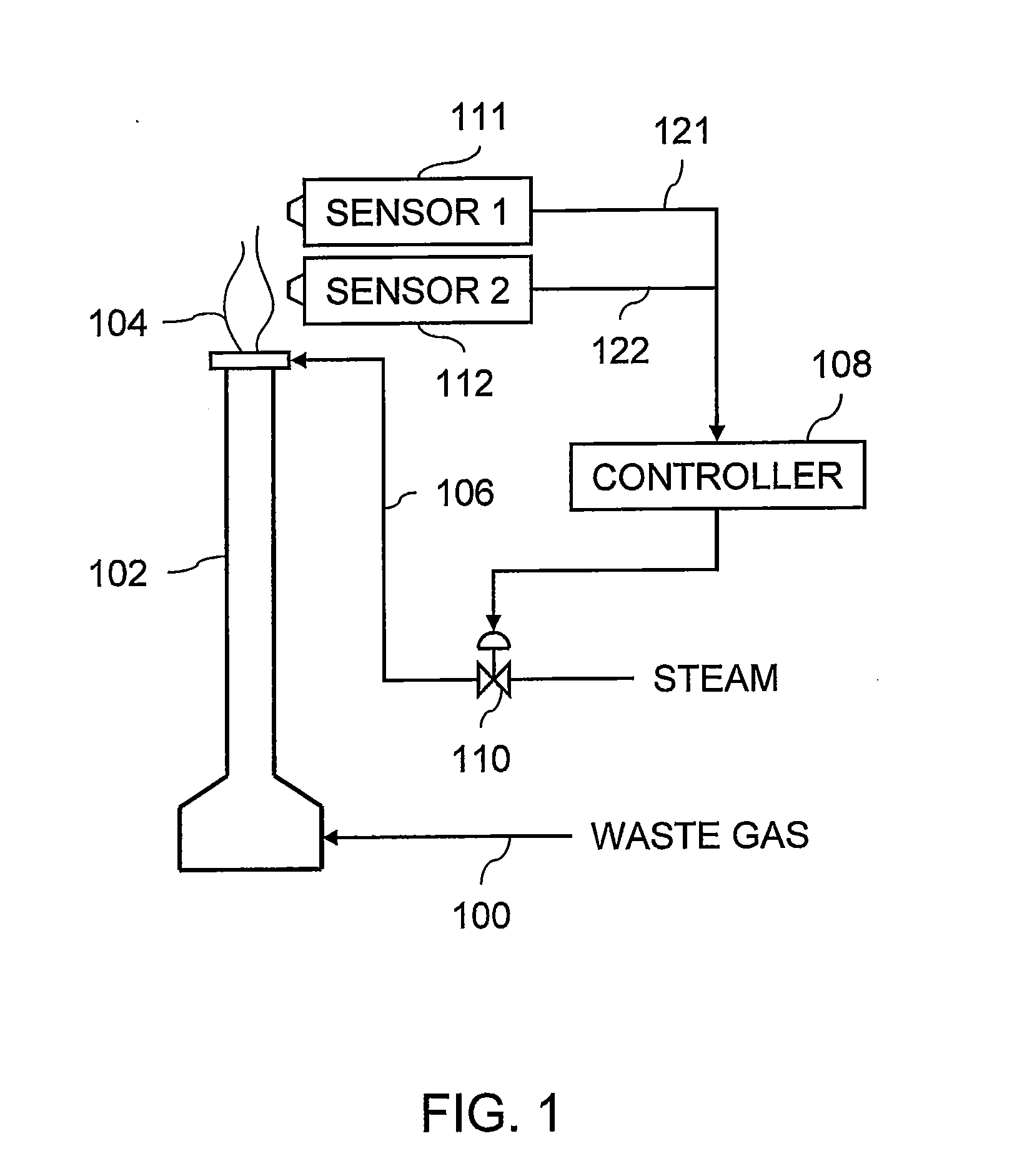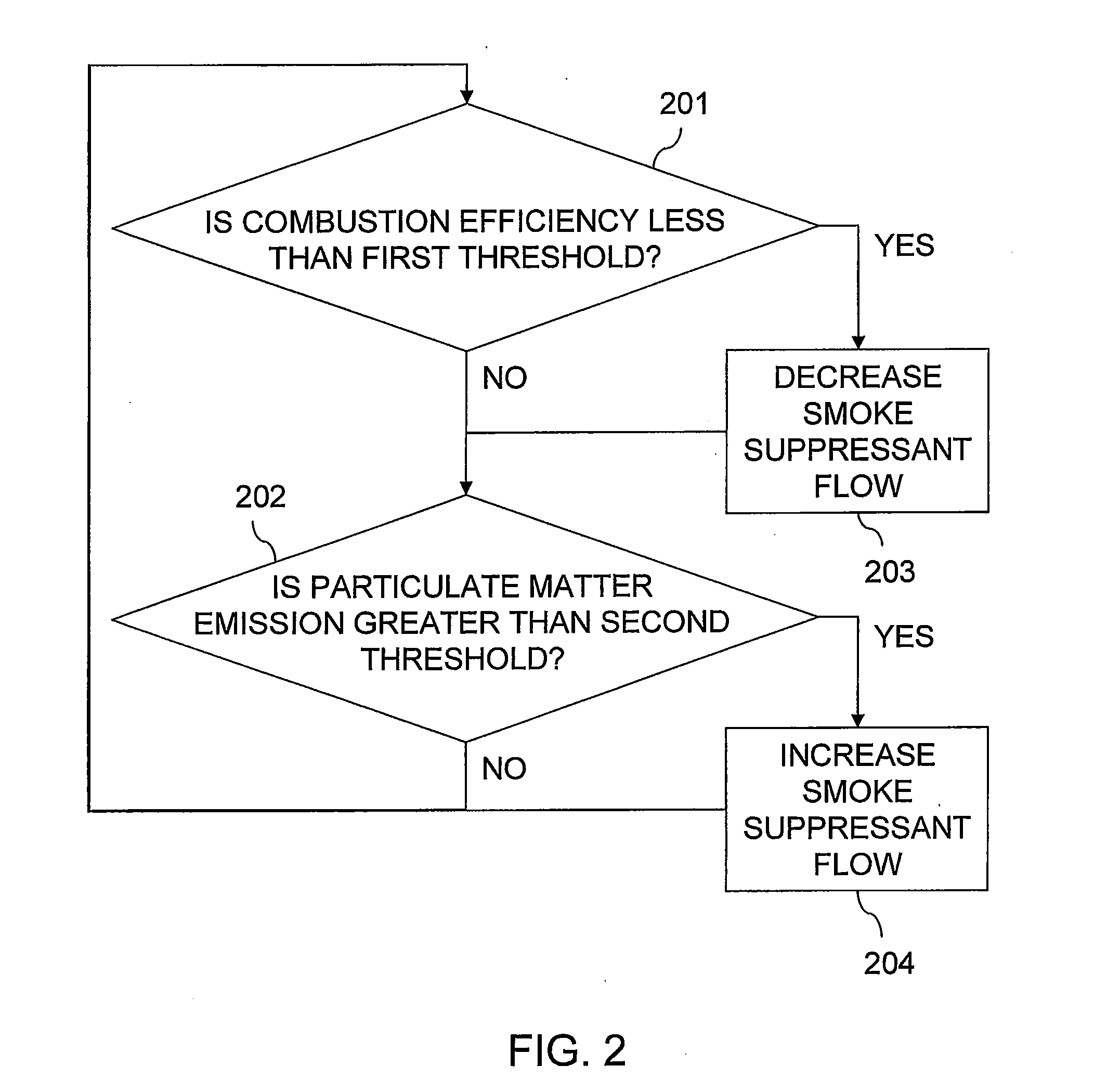Automated flare control
a technology of automatic flare control and control method, which is applied in the direction of lighting and heating apparatus, incinerator apparatus, combustion types, etc., can solve the problems of unfavorable emissions, emissions present environmental pollution issues, and the combustion efficiency of flares cannot provide a direct correlation to whether or not, so as to increase the steam injection rate and limit the smoke level
- Summary
- Abstract
- Description
- Claims
- Application Information
AI Technical Summary
Benefits of technology
Problems solved by technology
Method used
Image
Examples
Embodiment Construction
[0014]Embodiments of the invention relate to control of smoke suppressant flow rate to a flare that disposes of combustible gas, such as waste from refineries and chemical plants. One or more detectors produce signals that enable separate monitoring of both particulate emissions from the flare and combustion efficiency of the flare. Adjusting the flow rate of the smoke suppressant to the flare in response to such dual monitoring facilitates operation of the flare so as to manage environmental pollution caused by unburned volatile organic compounds and smoke emitted from the flare.
[0015]FIG. 1 illustrates a system that includes a stream of waste gas 100 supplied to a flare 102. The waste gas 100 may contain combustible hydrocarbons that come from a refinery or plant and are burned at a flame 104 exiting the flare 102. A smoke suppressant line 106 supplies steam and / or air to the flare 102 for injection into the flame 104.
[0016]The system further includes a controller 108 that operate...
PUM
 Login to View More
Login to View More Abstract
Description
Claims
Application Information
 Login to View More
Login to View More - R&D
- Intellectual Property
- Life Sciences
- Materials
- Tech Scout
- Unparalleled Data Quality
- Higher Quality Content
- 60% Fewer Hallucinations
Browse by: Latest US Patents, China's latest patents, Technical Efficacy Thesaurus, Application Domain, Technology Topic, Popular Technical Reports.
© 2025 PatSnap. All rights reserved.Legal|Privacy policy|Modern Slavery Act Transparency Statement|Sitemap|About US| Contact US: help@patsnap.com



